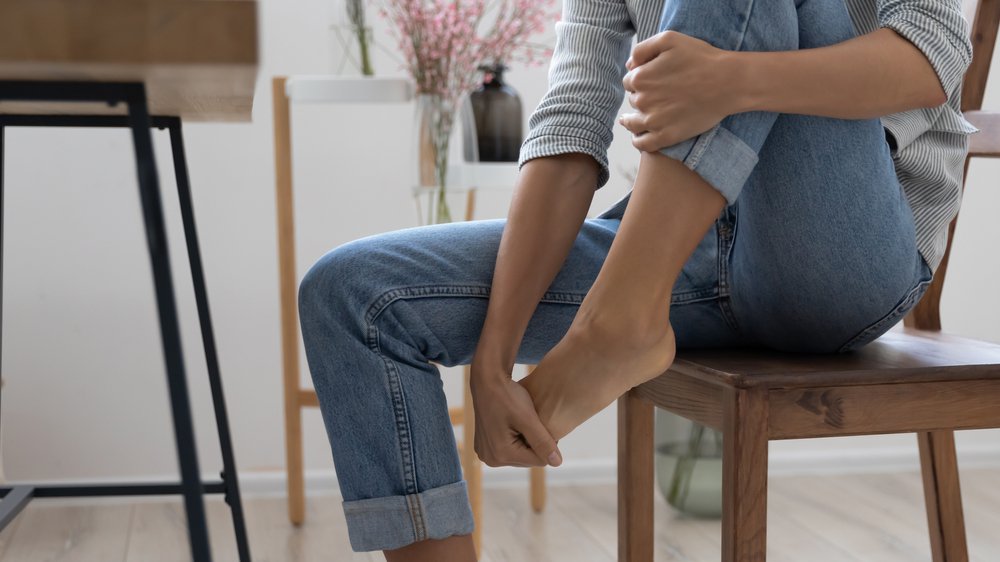
When your feet are in pain, you know about it. If you're living with foot problems, every step you take is difficult, and chronic foot pain may occupy your thoughts and prevent you from enjoying your life as you like to live it. But why are your feet in pain? What's the underlying cause of all that pain?
There are many potential causes of foot pain, but some are more common than others. If you're experiencing foot pain or extreme discomfort, the team at OAA Orthopaedic Specialists can help you find relief. Here are seven common causes of foot pain, along with steps your podiatrist can take to help you relieve pain and step freely.
Our board-certified, fellowship-trained podiatry specialists are experienced in providing a wide variety of foot pain treatments. We've helped countless patients in the Lehigh Valley and beyond find freedom from their foot pain, and we can do the same for you. Ready to find relief? Schedule your first appointment with our podiatry team today.
1. Plantar Fasciitis
One of the most common causes of heel pain is plantar fasciitis, which occurs when the plantar fascia—a band of tissue that connects the heel bone to the toes—becomes inflamed. This inflammation can be caused by overuse, repetitive stress, or wearing poorly fitting shoes that don't provide adequate support.
If you're struggling with pain in your heel bone and plantar fascia due to plantar fasciitis, the prognosis is more than good: Plantar fasciitis can be successfully treated with a variety of methods, including physical therapy, custom orthotics, and injections.
2. Achilles Tendonitis
Another common cause of heel pain, Achilles tendonitis, is the inflammation of the Achilles tendon - the large tendon that connects the calf muscle to the heel bone. This condition is usually the result of overuse and can be treated with a combination of rest, ice, and physical therapy.
For some patients who have sustained severe injuries to the Achilles tendon, surgery may be necessary. However, this is typically only the case for patients who have not seen results from more conservative treatments.
3. Bunions
A bunion is a deformity of the big toe in which the big toe points toward the second toe instead of pointing straight ahead. When the toe joint points inward, a bony lump protrudes from the foot, and this deformity can cause pain and difficulty walking.
Bunions in the big toe can be caused by various factors, including genetics, foot injuries, and wearing tight or poorly fitting shoes. When your toe rubs against shoes, it can become irritated and inflamed, leading to pain.
Big toe bunions can be treated conservatively, such as incorporating properly fitting shoes into your wardrobe and using toe spacers between your big toe and second toe.
For some patients with severe bunions in the big toe, surgery may be necessary to correct the deformity. Bunion surgery—also known as bunionectomy—is a common procedure that our board-certified, fellowship-trained podiatry surgeons routinely perform.
4. Hammertoe
A hammer toe is a deformity of the second, third, and fourth toes in which the toe is bent at the middle joint, causing it to resemble a hammer. Hammertoes can be caused by genetics, foot injuries, wearing tight or poorly fitting shoes, and arthritis.
Like bunions, hammertoes can be treated with conservative methods or surgery. Surgery to repair hammertoes is called a hammertoe correction and is another common procedure our board-certified, fellowship-trained podiatry surgeons routinely perform.
5. Neuroma
A neuroma is a benign growth of nerve tissue that commonly occurs in the ball of the foot. Neuromas in the foot pads can cause pain, tingling, and numbness in the affected area as a result of nerve damage. They are often caused by wearing ill-fitting shoes or shoes that fit tightly, including high heels.
Treatment for neuromas and nerve damage in the ball of the foot typically involves using supportive shoe inserts and injecting steroids into the affected area. It's also important to wear shoes that fit properly and don't compress the nerve in the ball of the foot.
6. Metatarsalgia
Metatarsalgia is a general term for pain in the metatarsal region of the foot. The metatarsal bone is the long bone in the middle of the foot that connects to the toes. When the metatarsal bones are damaged or inflamed, pain can occur in the ball of the foot.
Metatarsalgia is often caused by overuse, repetitive stress, or injury to the metatarsal bone. Treatment typically involves resting the foot, wearing shoes with arch support, and using ice to reduce inflammation.
7. Structural Foot Deformities
Structural foot deformities, like flat feet and high arches, can also lead to foot pain. When your foot is shaped in a certain way, it can create awkward foot placement and put excess stress on certain areas of the foot, leading to pain.
These conditions are often genetic, meaning they're passed down from family members. If you have a structural foot deformity like flat feet, it's important to wear shoes that relieve pressure and provide adequate support, preventing further damage and pain.
Custom orthotics are often used to provide support for flat feet and high arches. Orthotics are shoe inserts that are designed to correct specific foot problems. They can be custom-made to fit your feet by a podiatrist or orthotist, including the team at OAA Orthopaedic Specialists.
Visit the Top Foot Specialist Near You
If you're experiencing foot pain, the first step is to consult with a board-certified, fellowship-trained podiatrist. The podiatry team at OAA Orthopaedic Specialists is experienced in treating all types of foot pain, from bunions and hammertoes to neuromas and metatarsalgia. We will work with you to develop a treatment plan that meets your individual needs and goals.
If you're ready to schedule an appointment with the best podiatrist Allentown, PA, has to offer, it's time to get started with OAA. Contact us today to schedule an appointment!

